“You are looking at a handmade, natural-dyed Kharad painstakingly made by my son Samat and I,” says Tejsibhai Dhana Marwada, letting the coarse, flat-woven rug slowly drop to the floor revealing a design in intense colors of black, white and dark brown. “But most of all, you are looking at the story of our community migration that began about 600 years ago”. And that’s just one rug, one story.
A display of geometric and pictorial patterned rugs, carpets, and belts adorn the walls of National Award winner and master weaver Tejsibhai’s weaving shed in the village of Kukma, near Bhuj in Kutch, Gujarat. The weavings are both a narrative art form and a necessity.
Woven using the Kharad (Sindhi word for carpet) weaving technique on the most basic and ancient of looms, are the stories ofTejsibhai’s life and experiences. From the partition and the earthquake to the influence of monsoon on the crafts when food security takes precedence over stitching, all of it helps carry the ancient tradition into the future. Some of these narrative pieces depict the themes of his home, the traditional farming systems, community marriages and other festivals, highlighting the social and environmental issues as well.
Listening to Tejsibhai’s carpet tales will take you from Marwad on the edge of the Thar desert in Rajasthan to Kuran between the Black Hills and the Great Rann of Kutch, from the 14th century when Kharad adorned the many palaces in Sindh and Gujarat to today, where they warm up the floors of living rooms.
Kharad carpets, Tejsibhai explains, are knotted piled carpets that are produced with their front-facing downwards, which means the artisan has to rely on a mirror that is strategically placed beneath the loom, to observe the design. Meanwhile, Samatbhai gets on the loom to demonstrate this complex weaving technique.
As he weaves, he explains that the only tools used are a knife for cutting the weft after the knot has been tied, a panja made of iron for beating the weft threads in the warp so as to adjust them, and a pair of scissors for cutting the pile level. The making of a Kharad thus uses an ‘all hands in’ approach, and this is also what gives the craft its name, meaning ‘by hand‘.
“We always try to educate people, and inform them about the craft,” says Samatbhai, telling us how they make “carpet-shopping” a key part of most tourists’ visits to Kutch. Of course, the family’s main motive is to sell, and they acknowledge that most foreigners than Indians, who enter their home and shed, are interested in buying a carpet, the right colour and size for their living room or bedroom, at a price that fits their budget.
It’s while sifting through the varied type of carpets, qualities, and styles that the stories emerge.
Practiced by the Marwada Meghwal community in Kutch, Kharad, we are told, started back in the day when human and animal communed together, and the nomads needed something sturdy to make their journeys more comfortable. The Maldharis and Rabaris (Kutch’s pastoral communities) would shear the hair from camels and goats, and then pass it on to the hand-spinners who specialised in making wool out of this hair. The wool was then used by artisans to create products such as Kharad (for spreading on the floor), Khurjani (to keep on the back of a camel to carry heavy items), and Rasa (a thick cloth used to cover grains), showcasing geometric patterns, and motifs inspired by the desert.
Kharad, thus has roots in being the product of and basis for a strong ecosystem – connecting together herders, rearers, spinners and weavers, thus sustaining a communal way of working and living.
Coming to the rugs, Tejsibhai tells us that traditionally they were woven on nomadic looms constructed from locally found materials which could be easily set up, taken down, and moved throughout the desert on the backs of animals. These rugs were extensively used by desert communities as floor covers in winter, and for special gatherings of people. The designs and patterns were area specific – a motif merrily revealed its geographical identity. The wool was never dyed which is why the Kharad rugs were essentially black, white and brown.
The rug’s combination of minimalism and handmade detail, their subdued restraint and bold inventiveness, and the grace and precision of the spontaneous geometric designs, certainly speak for themselves. Yet, there is another layer to this work. The carpets carry a further storyline embedded in their taana and baana – the narrative of the “cradle to cradle” ethos of production. Be it the use of only natural fibres that are hand spun and hand-dyed using vegetable dyes or the fact that they are produced without any mechanical contrivance, such that each carpet can be safely returned to earth from where they’ve come, it’s surely a text for the times in which we live!
While born of necessity, the design of the Kharad style of weaving soon went beyond purely practical concerns. As Tejsibhai explains, in the beginning, Kharad was simple in its soul – black, brown and white. Themed, certainly. But nothing ornate. No clutter of a narrative. However, to survive, the precise designs and motifs of each rug have become a doorway into the past, an evocative symbolic language passed down from generation to generation. Camel wool and goat hair have been replaced with sheep wool, and dye baths have now become a thing.
You may take a look at the designs available at Khamir, here.

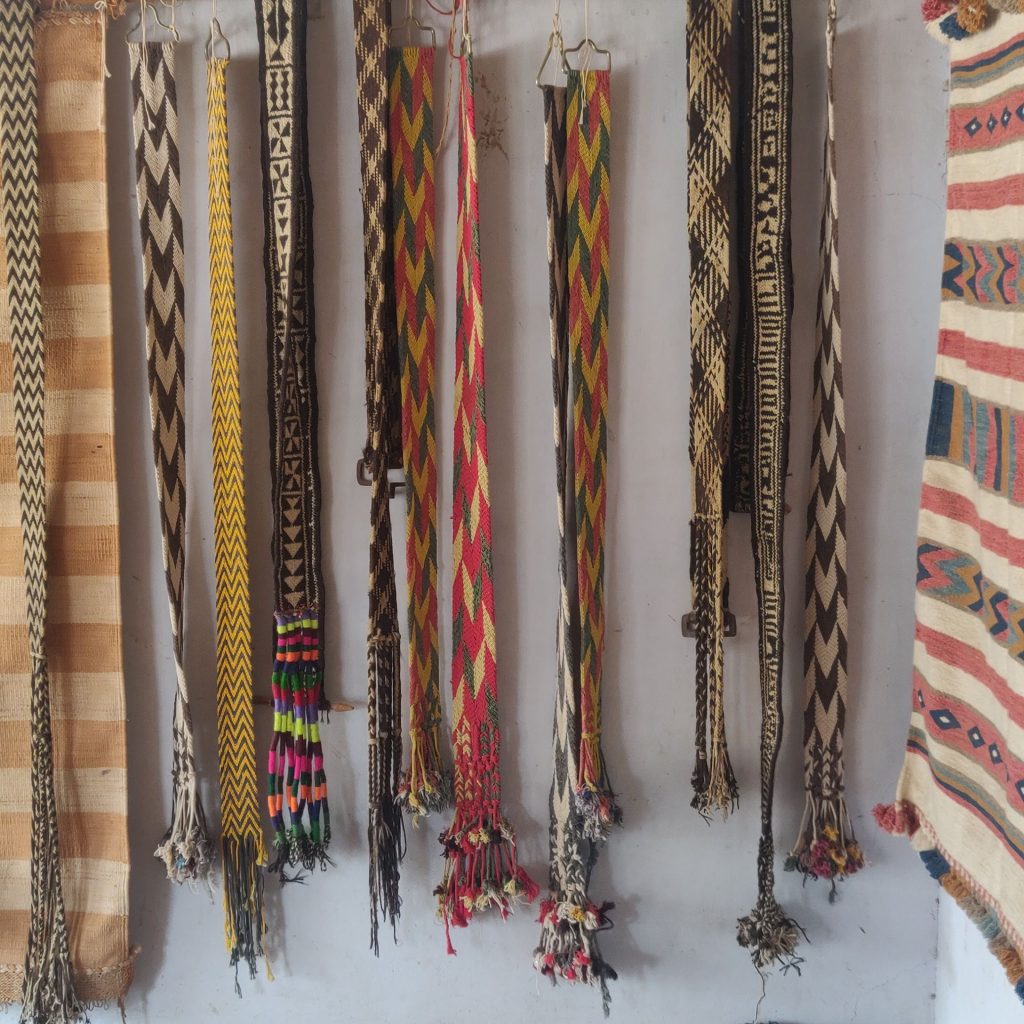
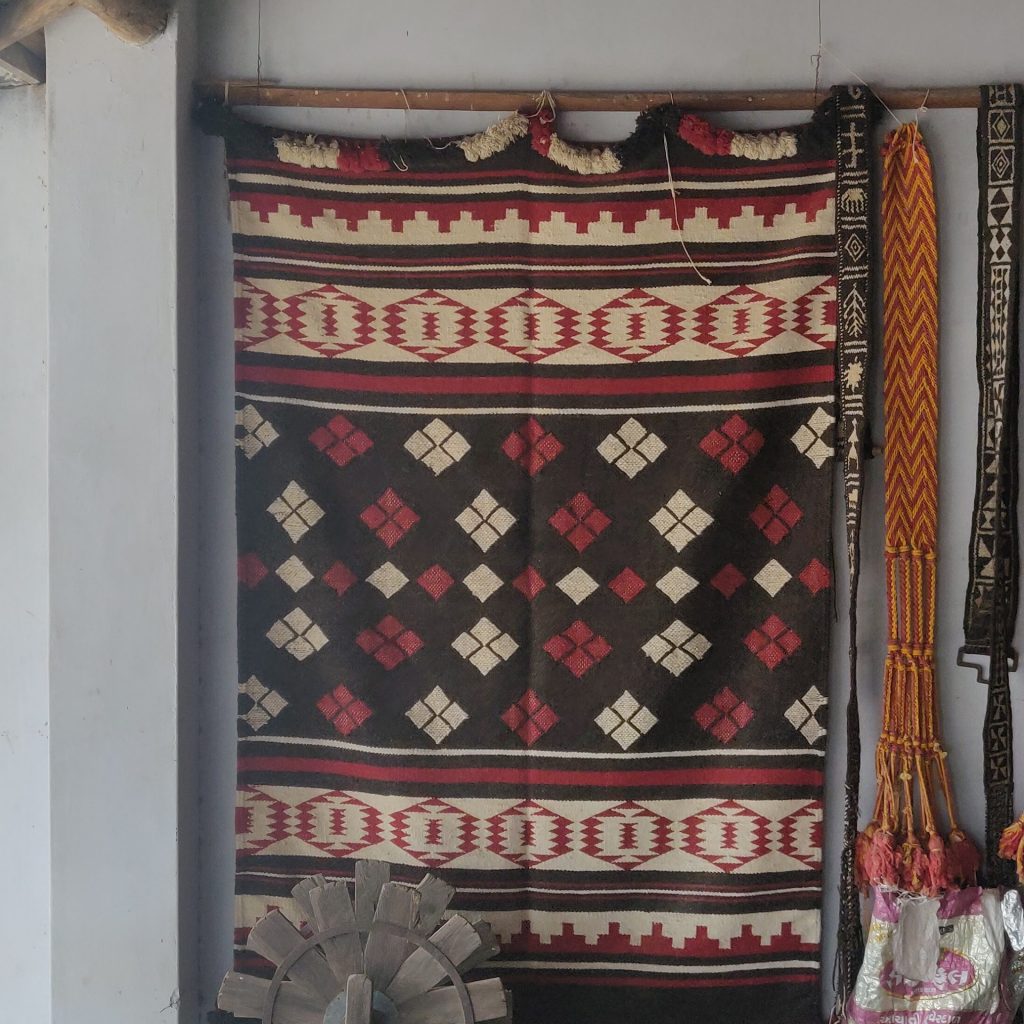
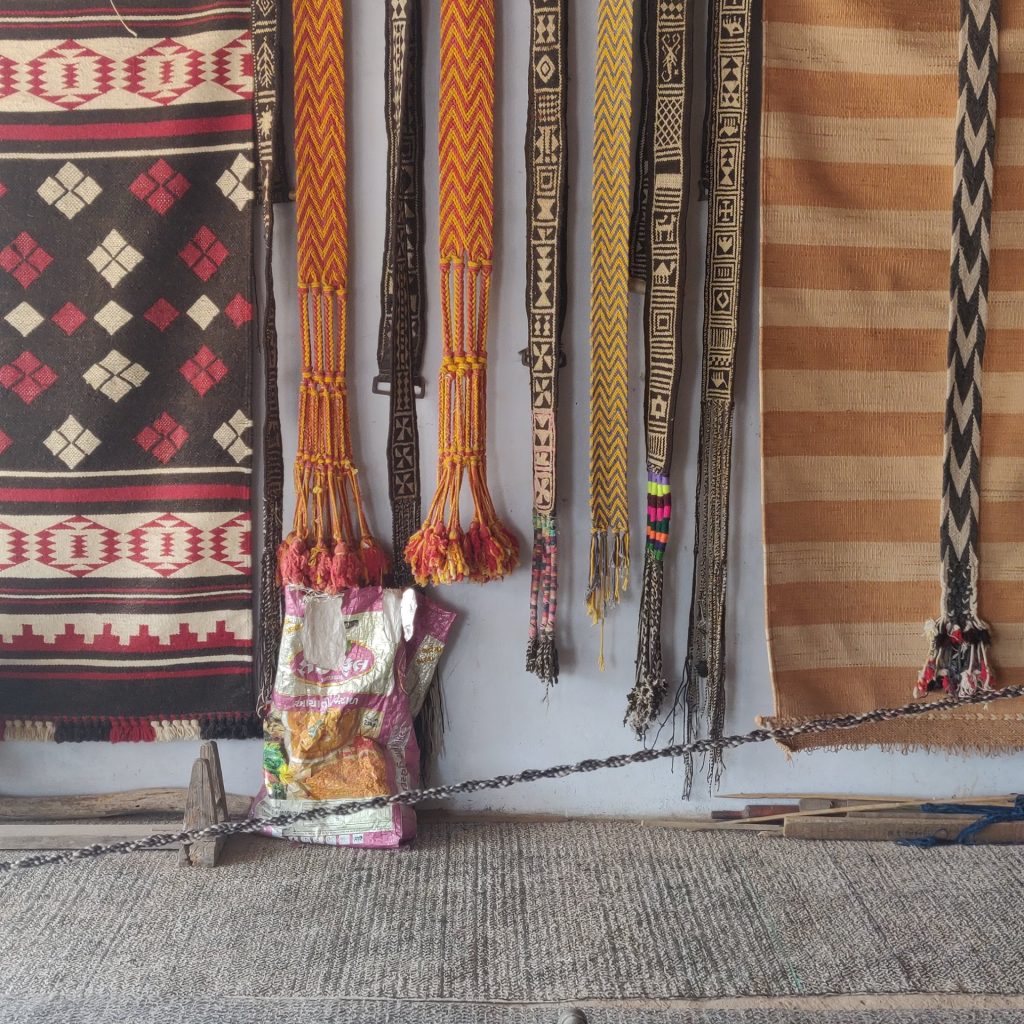
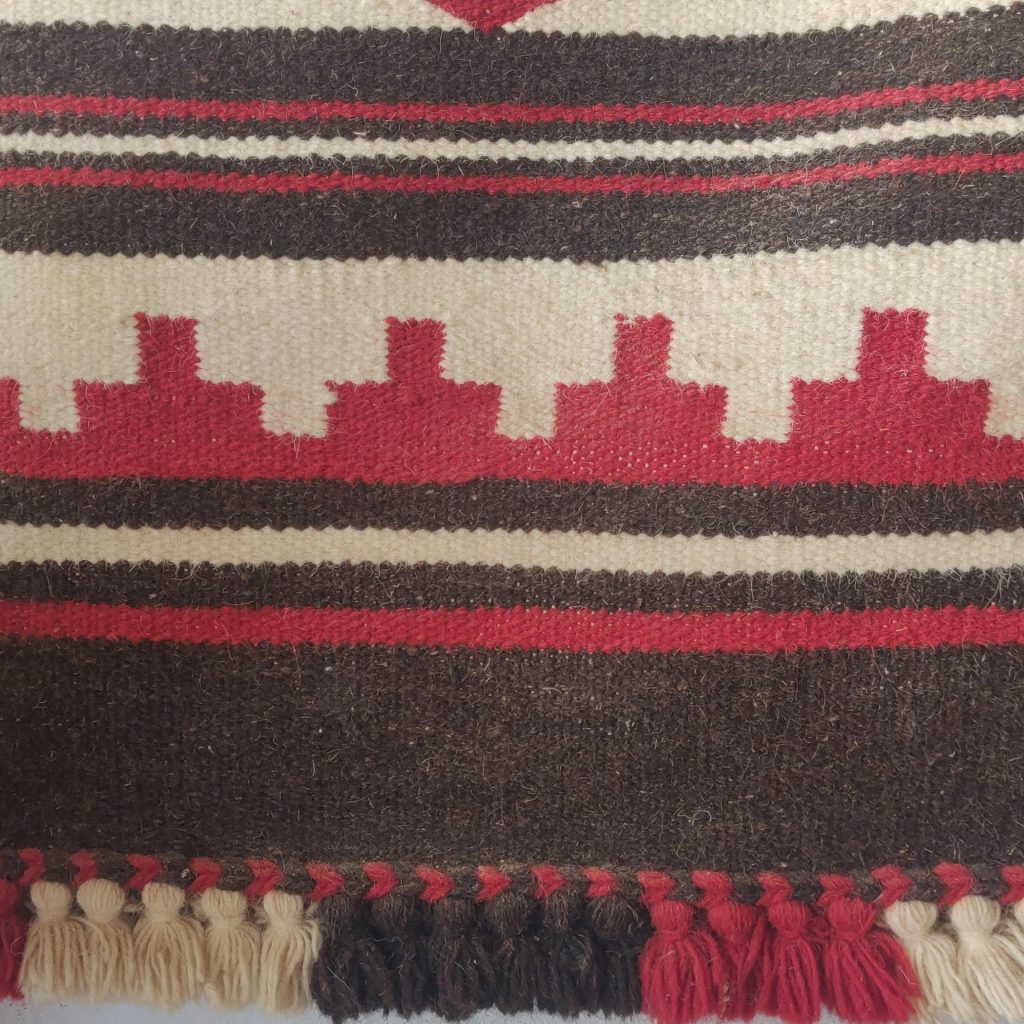
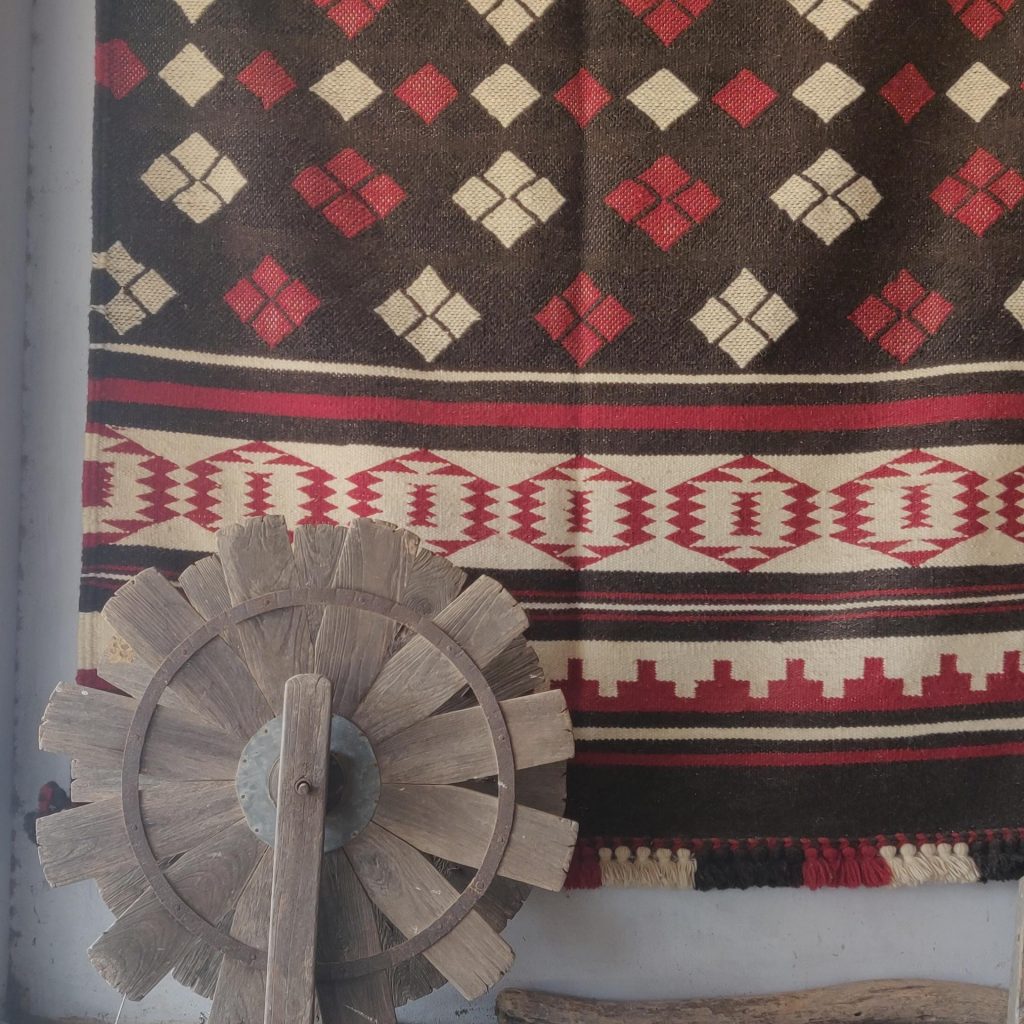



0 Comments